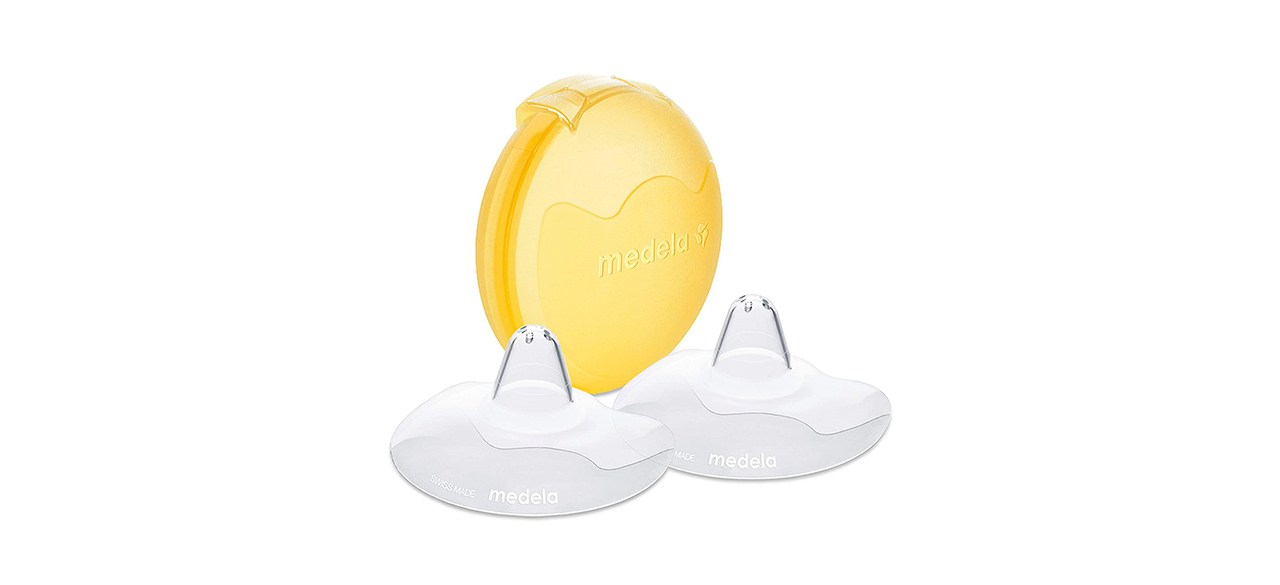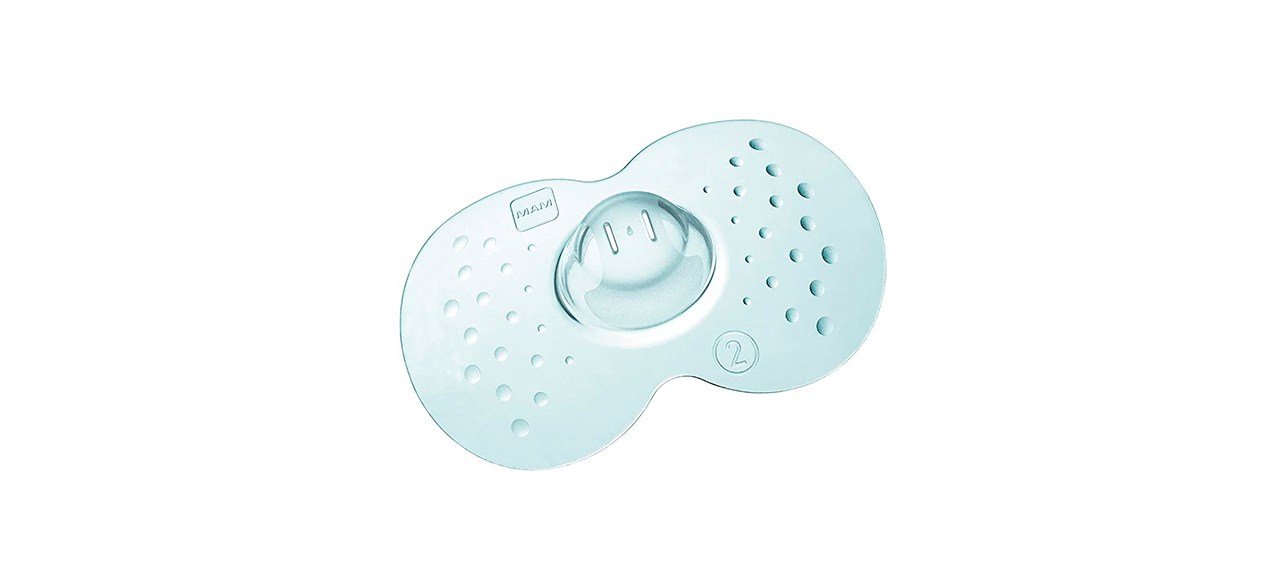Which nipple shield is best?
Nearly 84% of babies in the U.S. are breastfed for at least a portion of their early life. This natural way of feeding seems like it should be an uncomplicated bonding ritual, butmany women find it so challenging that they switch to formula before the recommended six months. If you are struggling to nurse, a nipple shield may be able to help.
For a comfortable feel and support for flat or inverted nipples, the Medela Contact Nipple Shield is a good choice.
What to know before you buy a nipple shield
Size
Just as nursing bras come in different sizes, so, too, do nipple shields. They are available in sizes that range from 15 to 24 millimeters.
To determine the best size for you, use a ruler to measure straight across the base of your nipple (do not include the areola in this measurement). Add 4 millimeters to this measurement to get the correct nipple shield size.
Keep in mind that the size may vary slightly depending on your baby, too. A lactation consultant can also help you measure and choose a good fit.
Reasons for a nipple shield
There are a variety of reasons why a nipple shield might help with nursing. If there are underlying medical conditions, it’s essential that those are also treated to give nursing the best chance for success.
What to look for in a quality nipple shield
Free of bisphenol A
Nipple shields are delivering precious nutrition to your baby. This should not be tainted with even the possibility of chemicals. Look for packages that are clearly labeled BPA-free.
Carrying case
A carrying case prevents the mad search in the bottom of the diaper bag and keeps the shields clean and sterile. Some also double as cleaning cases — just wash the shield, pop it in the case and microwave to sterilize.
Maximum contact with your child
Thin, light shields made from silicone offer the most contact with your child. These may have cutouts and use the least silicone possible to hold the shield in place.
When to use a nipple shield
Nipple shields are not required for nursing, and often they’re not needed at all. However, there are situations in which a nipple shield can be the difference between an enjoyable bonding experience and one that ends in frustration and pain.
- Sore nipples: Some babies are aggressive, enthusiastic feeders, and sensitive nipples can become sore and chapped. When nipples become sore, nursing may be too painful to continue. A properly placed shield can help you heal while continuing to breastfeed.
- Lip or tongue ties: Babies with lip or tongue ties may struggle to latch on properly. This extra bit of membrane holds the top lip closer to the gum or the bottom of the tongue closer to the floor of the mouth. In this position, it can be impossible for a baby to get enough suction to properly nurse. A nipple shield extends the nipple so the baby does not have to work as hard.
- Premature babies: Premature babies have an issue similar to those with lip or tongue ties: they cannot create enough suction to latch on and nurse. The extended nipple created by the shield means they don’t have to.
- Flat or inverted nipples: Flat or inverted nipples can be a challenge for even the most vigorous nursing babes.
How much you can expect to spend on a nipple shield
This may be one of the most affordable tools in your child-rearing arsenal. Expect to spend $7 to $10 for a pair.
Nipple shield FAQ
Q. Why is breastfeeding for the first six months important for a baby’s health?
A. There are several reasons.
- Breast milk is tailored to your baby’s nutritional needs.
- It builds up their immune system.
- It protects against infections, obesity, diabetes and cancer.
- Breast milk is easier for babies to digest.
- Babies who are breastfed score higher on IQ tests.
- As babies grow, breast milk adapts to fit their changing needs.
- Breastfeeding is easier on the environment than formula.
Q. Does areola size matter when it comes to properly latching on?
A. Yes and no. Those with very small or very large areolas may have difficulty determining visually if their baby is properly latched on, but this doesn’t mean that they can’t successfully breastfeed.
If you have concerns about your ability to nurse, it’s best to work with a lactation consultant. They can help you better understand how to get a successful latch. They can also suggest dietary changes for increased breast milk volume and comfortable positions for nursing.
What’s the best nipple shield to buy?
Top nipple shield
What you need to know: This is a good choice for breastfeeding challenges due to inverted nipples.
What you’ll love: These are made from thin, food-safe silicone that’s BPA-free. The cutout area promotes maximum skin-to-skin contact with your baby for a more natural feeling. They come with a carrying case, in three sizes.
What you should consider: Some reviewers said grabby babies could easily move these nipple shields out of place.
Where to buy: Sold by Amazon
Top nipple shield for the money
Mam Breastfeeding Nipple Shields
What you need to know: These stay in place and are convenient if you’re on the go.
What you’ll love: These are thin silicone, made in Europe and verified BPA-free. The surface is textured and has cutouts to let air flow. The storage case can be popped in the microwave for sterilization, and they come in two sizes.
What you should consider: Some babies did not prefer the flatter shape of these nipple shields.
Where to buy: Sold by Amazon
Worth checking out
What you need to know: These are best for babies with lip- or tongue-tie and nursers with overactive letdown.
What you’ll love: As with other nipple shields, they’re made of soft, flexible BPA-free silicone that has cutouts for airflow and maximum skin contact. They come in a set of two with a carrying case.
What you should consider: Some users thought the holes were too small, but these are designed to support latching issues due to active letdown.
Where to buy: Sold by Amazon
Want to shop the best products at the best prices? Check out Daily Deals from BestReviews.
Sign up here to receive the BestReviews weekly newsletter for useful advice on new products and noteworthy deals.
Suzannah Kolbeck writes for BestReviews. BestReviews has helped millions of consumers simplify their purchasing decisions, saving them time and money.
Copyright 2023 BestReviews, a Nexstar company. All rights reserved.









































